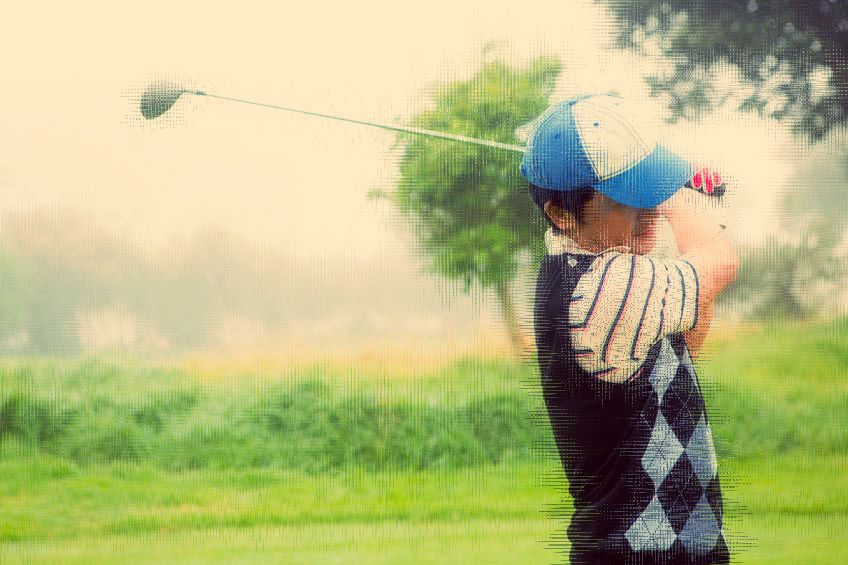Do you have spare time on your hands with nothing to do? If you do, 1.) Screw you, you lucky bastard, and 2) Maybe you should pick up the game of golf as a hobby. Contrary to popular belief, golf isn’t just for old dudes or yuppies from the Hamptons. Golf can be relaxing, engaging, and a great way to forge friendships and impress business clients. Plus, driving golf carts is just plain fun. Here’s a list of things you’ll need to get started:
Clubs
Specifically, you’ll need:
- a driver
- a 3-Wood
- a hybrid
- 2-9 Irons
- Pitching wedge, sand wedge, and lob wedge
- and a putter
If you’re purchasing golf clubs for the first time, go in with the expectation that you will be spending a good chunk of change. You can probably find a used set of irons (2-9 irons) for a few hundred bucks. However, not all iron sets are the same. I would suggest going into a retailer and trying out the set prior to purchase. You’ll need to purchase the driver, 3-wood, hybrid, wedges, and putter separately. To be a weekend golfer like myself, you can expect to spend approximately $1,000 – $1,500 for a complete set.
Golf Balls
Are you still reading? That price tag didn’t scare you off? Okay, when it comes to balls, there are many golf ball manufacturers out there to choose from. We love to imitate the pros, which is why Titleist balls are so popular. However, there are many less expensive options to choose from. Some alternatives include Nike, Callaway, TaylorMade, Pinnacle, and Bridgestone.
Golf Bag
You can select a golf bag of your choice based on design, comfort, quality, and price. To name a few, your options include Nike, Ping, Callaway, Cleveland, and Ogio.
Golf Attire
All private, and many public courses, have dress codes. It’s the golfer’s preference to wear shorts or pants, but most courses require a collared shirt. Many golfers like to wear hats, particularly baseball-style caps and visors. Golf shoes with soft spikes are also required on most courses. The spikes will help with your stance, balance, and grip.
Tees
Depending on the trajectory of your tee shots, you can choose to use a short or long tee. A short tee will allow the golfer to hit a shot with a lower trajectory, which is particularly important in windy conditions. A long tee enables a shot with a higher trajectory, which some players prefer. This is particularly significant when trying to clear fairway trees from the tee box.
Gloves
A golfer’s grip on the club is critical to hitting a good golf shot. You don’t want to grip too hard, which prevents you from feeling the shot in your hands. However, you want to make sure that the grip is tight enough so that the club doesn’t fly out of your hands.
Towel
It’s convenient to have a golf towel in your bag at all times, especially in bad conditions. If the course is wet or muddy, you’ll accumulate a good amount of gunk on your clubs after every shot. A quick swipe with the towel will remove any leftover residue on your clubs, which can affect your next shot.
Divot Fixer
If you’re anything like me, you’ll hit your fair share of bad shots with the good. However, if your approach shot manages to land on the green, the ball mark divot will need to be repaired. It’s the golfer’s responsibility to repair your own divots.
Ball Marker
Once you’re on the green, you’ll need to mark your ball, placing the marker directly behind your ball. This will allow the other golfers in your group to hit up onto the green, and to putt while everyone is on the green, without the possibility of it hitting another ball.
Sun Block
Don’t underestimate the importance of sun block. Remember, a typical golf round takes about 4-5 hours. Stay protected! You don’t want all your precious golf time to go to chemo appointments to treat your skin cancer.
Water
This seems like a no-brainer. Whatever your preference is, stay hydrated! Most choose water or Gatorade, but sometimes beer is a popular choice. If you’re going to down beers between holes, make sure to consume water in between rounds to prevent dehydration. If you knew my friends, you’d know that this is a suggestion that we need to listen to as well.
Now that you know the essentials of a weekend golfer, take your game to a nearby course and practice, practice, practice! If you’re anything like me, you like playing a course, but dread putting in practice time at the range, especially putting. But remember, for an average weekend golfer, the best way to improve your score is to work on your short game (chipping and putting). Work exclusively on your short game for a few weeks and you’ll see results. I guarantee you’ll shave a few strokes from your average handicap.














-300x200.jpeg)
-300x213.jpeg)










